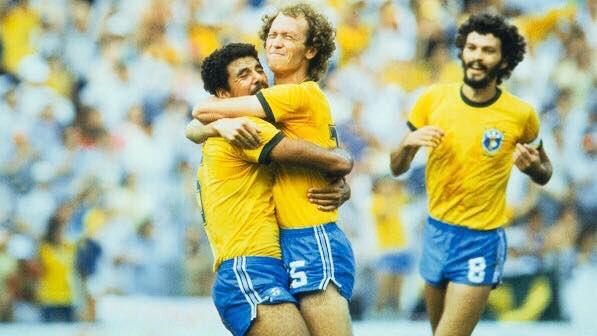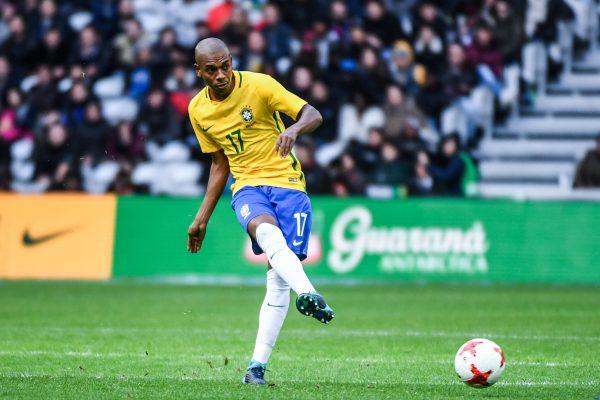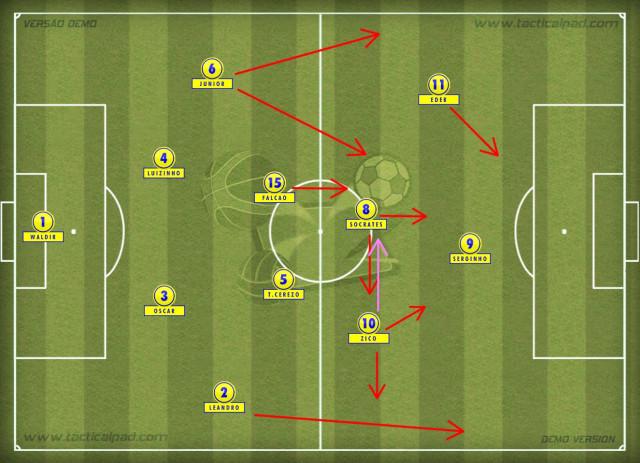
Young Devils – Samba United and The Magic Box
There are two ways to creating tactics in Football Manager 2020. One that most FM players, myself included, use is to start with an idea of what kind of tactical style you want to achieve. Then look at your team and try to mold your players into the roles that fit such a style. Sometimes this can work very well, especially when starting with a squad that worked under such a system before. For example it will be easier to turn Borussia Dortmund, given their history under Jurgen Klopp’s Gegenpress, into a Total Football side than squad previously managed by Mike Pulis. Up to now Young Devils Series has been all about imposing Total Football onto Manchester United squad. But now in my 3rd season with Red Devils, can the opposite work? Can I develop an effective tactic to fit a few, exceptional players?
Historical Inspiration – World Cup to Remember
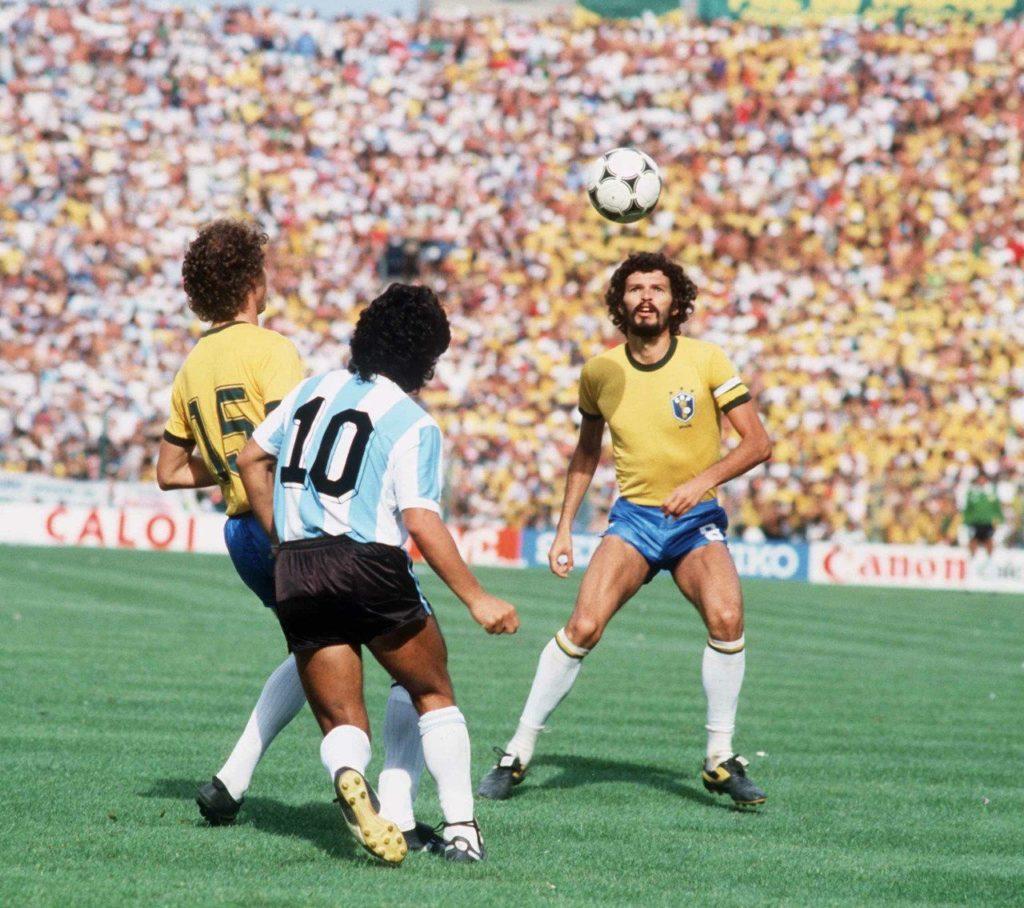
There is a common thread that runs through the history of the World Cup. Three of the Cup’s greatest sides, Hungary 1954, Netherlands 1974 and Brazil 1982, did not actually win the competition. Yet these three legendary teams were renown for their talent and skill. You could say all three were “magical” in the way how they still capture our attention years later. Decades before Galacticos, we had Magical Magyars, Magic Box and the Flying Dutchmen. Football fans at the time were fortunate enough to witness three of the best super-teams ever assembled. I already showed in my examination of 1974 Dutch Total Football, how that legendary team changed the course of football innovation. The 1982 Brazil side were similarly influential. But rather than being the starting point of a revolution, they were the apotheosis of Brazilian jogo bonito style. Samba football at its finest. Before it’s fall.
Even-though Italy won, 1982 was Brazil’s year to celebrate its “beautiful game” before its eventual decline. The team assembled by 1982, although without the genius of Pele, was collectively the greatest side ever fielded by Brazil. In terms of technique, creative flair and pure artistry on display it was probably the most creative side ever assembled. If one needs proof that football can be an art-form, one need just watch any clip of that squad play. While Brazilian flair-focused football was overshadowed by Europe’s Total Football, it does not mean that it was inferior. Or that it cannot make a comeback.
Time for Change
Some of you might ask, why the sudden change from Total Football and Bielsa-ball? After-all the Devils were doing pretty well with my 4-1-4-1 and 4-3-3 high pressing tactics. And for those interested here is the final version of my Bielsa-ball. There is reason to the madness however.
Bielsa-ball Tactic Download Link: https://ufile.io/rqjns0g4
As you can see after a solid season of testing, we ended up runners up for the title. The definite highlight was the two months-long no loss streak. Yet despite the success, we needed a change. I felt like I achieved most of the goals I set out with. Especially in trying to emulate Bielsa’s style in FM20.
So what were we missing? Despite lack serious hardware (aside from a lone FA cup) we managed to move United to the top of Premiership. Which is no small feat. Especially when it involves consequently finishing 3rd and 2nd in a highly competitive league. A league that includes two of the arguably best possession-hungry teams in the world, led by two visionary managers.
So after two years of emulating Bielsa, something was missing. We were winning matches and defending well, but coming short when counted most. On the Champions League stage we were missing that exciting spark that often means the difference between glory and heartbreak.
But in the end, I am a manager who thrives on discovering new ways to achieve attractive, attacking possession football. For a while my attempt to recreate Bielsa-ball was achieving just that. I even developed a new team DNA to instill the essence of Bielsa’s system at the core of our squad. It will still serve its long-term purpose of directing our future squad building efforts. Hard-working, well-rounded footballers are useful in any playing style.
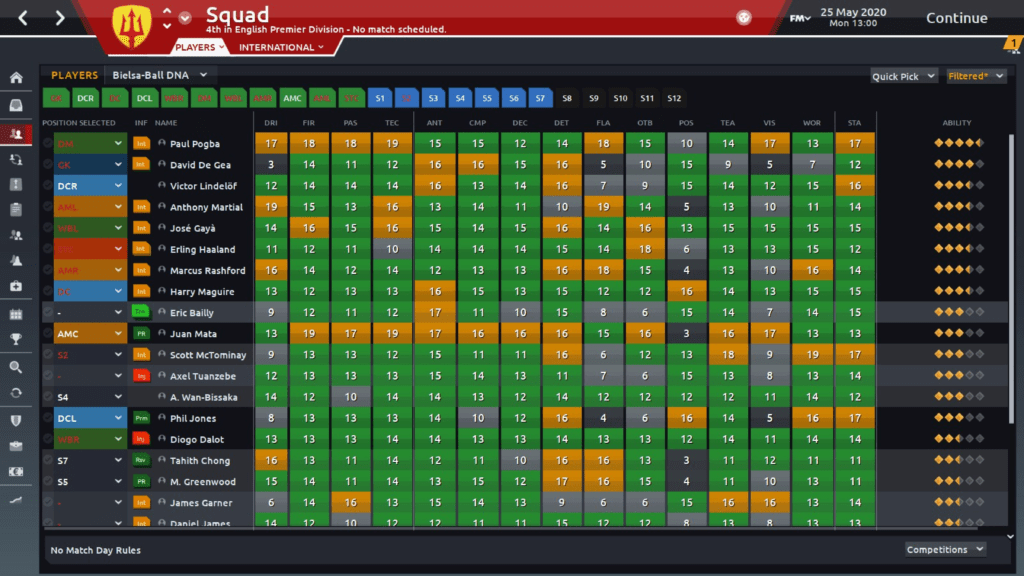
And in the wise words of Harry Redknapp; “All this stuff about pressing is nonsense – it’s nothing new. All teams who are successful have to work hard.” But it is when one marries Hard Work and Balance (in both tactical and individual sense) with exceptional Technique and Flair that real magic happens.
The Spark of Magic
There were only a few signings at Old Trafford in the Summer of 2021. But they were significant. Since our major club DNA restructuring effort (Spanish Armada), there has been less need for big transfers. So during this summer, the focus has definitely been on youth development. One of the two transfers was Ilaix Moriba, the wonderkid from Barcelona. At 18, he has been labeled as “Pogba of Barca”. And this comparison is not all that surprising when you look at his profile. Not too bad for a teenager.
And Romulo, another wonder-teen from the favelas of Rio de Janeiro. So without further ado, let us welcome Romulo Zaksauskas Ribeiro Ventura! He is truly something special.
I am especially excited by his maxed technique, high flair and other mental attributes. Considering he still has lots of potential for growth. He is definitely the poster boy for our new tactical style change.
Our chief scout also agrees with his high 5 star assessment. He seems to think Romulo will be the next Ronaldo.
No. Not THAT Ronaldo. Although that would be pretty ace too. THIS Ronaldo.
UPDATE: I was able to buy Romulo from Flamengo for 33 million, bypassing the workpermit. Cannot wait for him take on the Premiere League this year!
Introducing The Concept
Usually I try to fit the team into a predefined tactical system. In the next series of articles. I will show how to do the opposite. Take the players available to you and try to create an exciting tactic. Ideally one geared towards making the best use of their traits and attributes. This is how Young Devil’s Jogo Bonito Style was born.
Originally the change came along midway through the second season as I made one important realization. My squad has become filled with world-class attacking midfielders and strikers. Naturally this is not a bad thing. It became problematic however when some of my forwards and playmakers started to complain about lack of playing time. The worst case was probably Martial, whom I felt I neglected the most. He ended up playing 22 games (15 of which were as a substitute). He just didn’t fit into a Total Football/Bielsaball-like system. Martial is a very technical and creative player, but not a very hard-working one. Yet I think he is capable of excelling in a Brazilian-style system. Especially as a supporting striker or even shadow striker. It is just a matter of developing the right tactic for him.
Introducing The Magic Box
One must understand why the “Magic Rectangle” (or Box) formation was so popular in South America. This shape helped Brazil National team to dominate through 60s and 70s (especially at 1970 World Cup). Dependable and tested, it was like 4-4-2 in England. But more importantly 4-2-2-2 was chosen by Telê Santana, Brazil’s 1982 manager, because it could accommodate his best players. This was no easy task as he had two of the world’s best attacking midfielders. Zico who at the time was the world’s top footballer, and Socrates, the most cerebral player of beautiful game. Socrates, a trained medical doctor and political activist, was Brazil’s answer to Holland’s Cruyff, and the Brain of the formation. He saw the field like no other, stringing together complex passes with sublime ease of a general. This was only matched by his precision in hitting the ball.
So eventhough 4-2-2-2 was not a new tactic, what made Brazil’s Box so magical were the players in it. With Zico and Socrates driving forward, lets add the other components of the Box, Falcão and Cerezo, into the mix.
Typically, in a 4-2-2-2 the two defensive midfielders are its most specialized, key players. In order for the whole tactic to work effectively, you need two pretty special players. You also need them to sit back in front of the backline. Thus the defensive midfielders can cover the defence while the wing-backs charge aggressively up the pitch. In addition to being defensively responsible, it’s crucial for the defensive midfielders to be great passers, especially comfortable with long-balls.
Both Falcão and Cerezo were what you would describe as elegant deep-lying playmakers. Cerezo was the more physical (due to his exceptional stamina) of the two. But he was by no means your stereotypical holding midfield destroyer. In truth, Brazilian interpretation of the Anchor role differed somewhat from the gritty European one. If anything the more modern interpretation of Italian regista would be closer to how the two Brazilians played. Their organizational sense and wonderful range of passing made up for any weakness in tackling or strength.
Thus the four best players in the midfield rectangle (with two screening the defence), gave the fullbacks more creative freedom. In another typical Brazilian fashion, fullbacks essentially played as wingers who started deeper. The modern concept of a wingback was born in Brazil. Unlike their European fullback counterparts, they had no defensive responsibilities. The only players tasked with staying back during attacks were the two centrebacks and two holding defensive midfielders. In theory at least. In reality, Falcao and Cerezo acted more as aggressive registas than anchors. Which turned out both the strength and weakness of Brazilian Magic 4-2-2-2.
4-2-2-2’s Strengths and Weaknesses
The main strength of 4-2-2-2 is in how it exploits deficiencies in the space between opposition’s defense and attack. At the same time it maintains a balance in your own defense and attack. Ideally you have six players (wingbacks and attacking midfielders) in any phase of play. At the same time four players (centrebacks and anchors) act as a solid defensive core.
As a result, the kind of players that would flourish in 4-2-2-2 are multi-functional generalists. The only specialists in the system are the defensive midfielders, who act as creative screens for the defence. Thus as mentioned before they need to be good in defence but also very good passers. You will probably have most difficulty filling their roles. Someone like City’s Fernandinho would be ideal. The rest of the team needs to be comfortable in both attack and midfield transition. So strikers need to be decent passers to link better with midfielders and wingbacks. While the attacking midfielders need to possess good off the ball and composure to be an additional attacking threat.
Thanks to the defensive midfield specialists, the front four are free to attack with the support of the two wing-backs. The two attacking midfielders can stray wider (as mezzalas) or cut inside to support the two strikers. And the wing-backs on either side can overlap, adding another dimension to attack. In theory it can be a very aggressively offensive tactic, despite technically keeping four in the back.
The idea is to overload the attacking line down the middle of the pitch. This naturally leaves the wings relatively vulnerable. But opponent’s plays there are seen as a predicted collateral, doing no more than limited damage. Afterall they will still need to move centre-wise to score. Having at least one tall and strong centreback is essential here to defend against crosses. Thus you are totally in control of the central area, with no less than 6 players there.
The Brazilians were no doubt beautiful to watch. Especially when in attack they would go from 4-2-2-2 to a free-flowing 2-7-1. In practice, 1982 Brazil lost because they got too reckless and the back four did not perform as well as the front six. The forward runs by both deeplying playmakers left too much space for counterattacks. They were able to score 15 goals in 5 games, but not without leaked goals. Their only nly one clean sheet against New Zealand). Brazil’s weaknesses became exposed against a well organized counter-attacking team like Italy. Where things broke down was was when both the full-backs and defensive midfielders went forward, leaving just the two centrebacks in defence.
Samba United – The Tactical Experiment
One exciting thing about my Manchester United squad is that our midfield is packed with great players. Much like Brazil in 1982, our two best players are natural attacking midfielders, Pogba and Oyarzabal. Ideally to get the best of them, we will need attacking roles pushing up aggressively from the midfield. They will need to have good interplay with the strikers. And to take full advantage of the space freed up in making late runs on goal. I believe that mezzalas will be perfect for this.
There’s also a wealth of young talent pushing into the first team from the sidelines. Garner was the big revelation for us last season. He firmly cemented his starter spot with an outstanding overall performance. Speaking of Young Devils, Garner is a perfect example of one who is developing to his potential.
But he is more of a deep playmaker, most fitting of the Falcao or Cerezo role. I suspect he will develop a great partnership with Merino in the defensive midfield pairing. While the competition for Pogba and Oyarzabal will most likely come from Gomes, Moriba, and young Hannibal. All three are on the verge of their own breakthroughs into the First Team. Then there are also aging Mata and Lingaard who are great backups in attacking midfield.
Upfront, we also have the striking force to more than match the classic Eder and Serginho partnership. In Rashford/Haaland we have one strong player to bang in the goals (a la Eder). And in Martial/Greenwood – creative supporting partner to hold up the play to give time for the midfielders to catch up. Which was basically Serginho’s role. And just as the Brazilian giant did, at times they will need to be able to defend from the front. The attacking striker could be a Poacher or Advanced Forward. While I foresee his partner as a mix between Pressing Forward and False9.
So in its essence, this is the formation that I plan to start 2021-2022 season of Young Devils with. The spirit of unrestrained Brazilian attack remains along the wings where I hope the two attacking wingbacks will act as essentially deep wingers. But unlike 1982 Brazil, the balance will hopefully be maintained through two disciplined roles in the defensive midfield. Despite using static roles like anchorman, I am hoping that the players’ traits and attributes will lead them to act more like playmakers than suggested by this conservative role. But without actually leaving their positions too much to make those dangerous runs up-field. The defensive core of four players needs to be maintained if both wingbacks are to attack.
Conclusion
As we all know the match engine has undergone some major changes recently. So I think it is a perfect time to test a new tactical system from a relative blank slate state. The plan is to see how my Magic Box tactic fares for half a season with Man United first. And then maybe with another mid-level club. I was thinking that Ukraine’s Shakhtar would be perfect, because of its Brazilian influence.
I will be sharing my results and tactical conclusions in the next update. You are welcome to test it on your own. But do keep in mind that some of the roles (especially the strikers) are not finalized. Also, the tactic overall will probably undergo more tweaking as I get used to the updated match engine quirks. Until then happy testing and thank you for reading! And feel free to follow us @ Dictate The Game’s Facebook and Dictate The Game’s Twitter!
Preliminary Samba-Ball Tactic – https://ufile.io/9d7ebhbo








